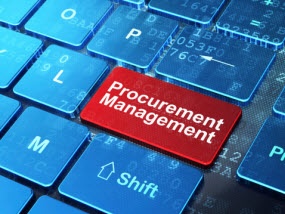 Procurement includes the processes by which manufacturing requirements are translated into supplier requirements, how supplier relationships are managed, and ultimately the ordering of goods and services needed to produce the product.
Procurement includes the processes by which manufacturing requirements are translated into supplier requirements, how supplier relationships are managed, and ultimately the ordering of goods and services needed to produce the product.
Leading edge manufacturing, pharmaceutical, food and natural resource organizations are realizing that the set of processes that surround procurement are not only key to short-term cost reduction, but are also strategically important. These organizations have elevated the importance of Supplier Relationship Management (SRM) to a level equal to that held by Customer Relationship Management (CRM) a long-standing discipline in most organizations, and now view effective supplier relationship management as one of the keys to manufacturing process improvement. Why?
PwC’s Supplier Relationship Management: How key suppliers drive your company’s competitive advantage offers these key reasons:
- Procurement-related costs are usually the largest single cost in the manufacturing process: “…procurement costs as a percentage of total cost is 50-80% for companies that develop, manufacture, trade and/or distribute goods.”
- Procurement processes are a key source of waste in the drive to Lean processes: 25% of the value of a contract is typically lost to “contract leakage.”
- Strategic supplier relationships are now critical to innovation and staying competitive: “Companies are now aware that they must integrate and collaborate with suppliers to remain competitive and take the next step towards procurement excellence. Supplier management is not a new topic, but it has always been the ‘stepchild’ of the procurement function.”
Supplier Relationship Management tools, combined with a solid enterprise content management (ECM) foundation supporting those tools, can create a predictable and scalable solution to help solve these five key procurement challenges:
Challenge #1: Internal procurement processes are engulfed in masses of documents and paperwork, in incompatible files, formats, and systems. Eliminating paperwork in managing this information is a critical first step in manufacturing process improvement.
- Forecasting sheets, supplier information, product research documents, and regulatory information used internally in the planning stages of building supplier relationships.
- Requests for quotation documents (RFQs), inspection sheets and approval documents, that map against the process by which suppliers are initially identified, audited, and approved.
- Contracts, orders, purchase orders, estimates, correspondence used to place an order with a supplier.
- Manufacturing documentation, supplier data, bills of lading, freight bills, proof of delivery, invoices, correspondence that are used to track an order.
- Functional testing reports, inspection reports, supplier quality data, materials data, defect reports, and defect resolution workflows used to determine whether an order met the original set of requirements.
Challenge #2: As external supplier relationships become more strategically important, the operations of manufacturers and their supply chain become more intertwined. Lack of a common approach to managing the information that drives these relationships creates massive “document chaos” and inefficiency. Eliminating paperwork smooths these strategic relations and allows the focus to shift to the content of documents rather than simply managing the documents themselves.
Challenge #3: Not all suppliers are of equal importance, yet most manufacturers treat them all the same. Suppliers can range from those who are purely Transactional suppliers (driven by specific contract requirements) to Collaborative suppliers (driven by a desire to reduce risk and deliver just-in-time inventories) to true Partner suppliers (driven by a joint commitment to innovation). Segmenting suppliers relative to the value they contribute is instrumental in optimizing these relationships.
Challenge #4: Manufacturing margins are being squeezed, and inefficient procurement processes are at the heart of the problem. Per Jonathan Davies in The Benefits of Supplier Relationship Management, “Modern manufacturers work with a wide range of suppliers, and supply chains are growing increasingly complicated. The growing need to cut prices for the consumer means margins are being squeezed like never before. And in order to maintain profitability and drive efficiencies, these companies are turning to supplier relationship management as a controlled and systematic approach to sourcing the goods and materials they need.”
Challenge #5: Supplier sales systems are typically more sophisticated that manufacturer supplier management systems. There is an “unevenness” in the sophistication of the sales systems in place in supplier organizations (which tend to be fairly mature) and the supplier relationship management systems in place in manufacturing organizations (which tend to be mostly ad hoc and tend to treat all suppliers alike). This leads to a deterioration in the buying power of the manufacturer.
Leading companies have responded to these challenges by adopting Supplier Relationship Management systems and by creating a consistent and automated approach to managing the documents and content within their SRM system. Benefits of these systems include: 1) Reduced costs; 2) Increased efficiency; 3) Consolidation of the supply chain; 4) Ability to more effectively outsource specific activities; and 5) Continual manufacturing process improvement.
Traditional procurement systems focus on cost reduction. Leading organizations are working to transform their procurement systems to create new value. Adopting a strategic approach to managing procurement processes, the information that drive them and eliminating paperwork creates four key benefits:
- Smooth acquisition of customer order and supporting documentation, ability to review this information against quotes or previously agreed upon contracts, and dispatch to production for fulfillment.
- Greater management visibility to manufacturing and order process, issues, bottlenecks and problems.
- Faster order fulfillment, increasing revenues by handling more orders per employee and unit time.
- Faster bid processes and reduced procurement costs.



